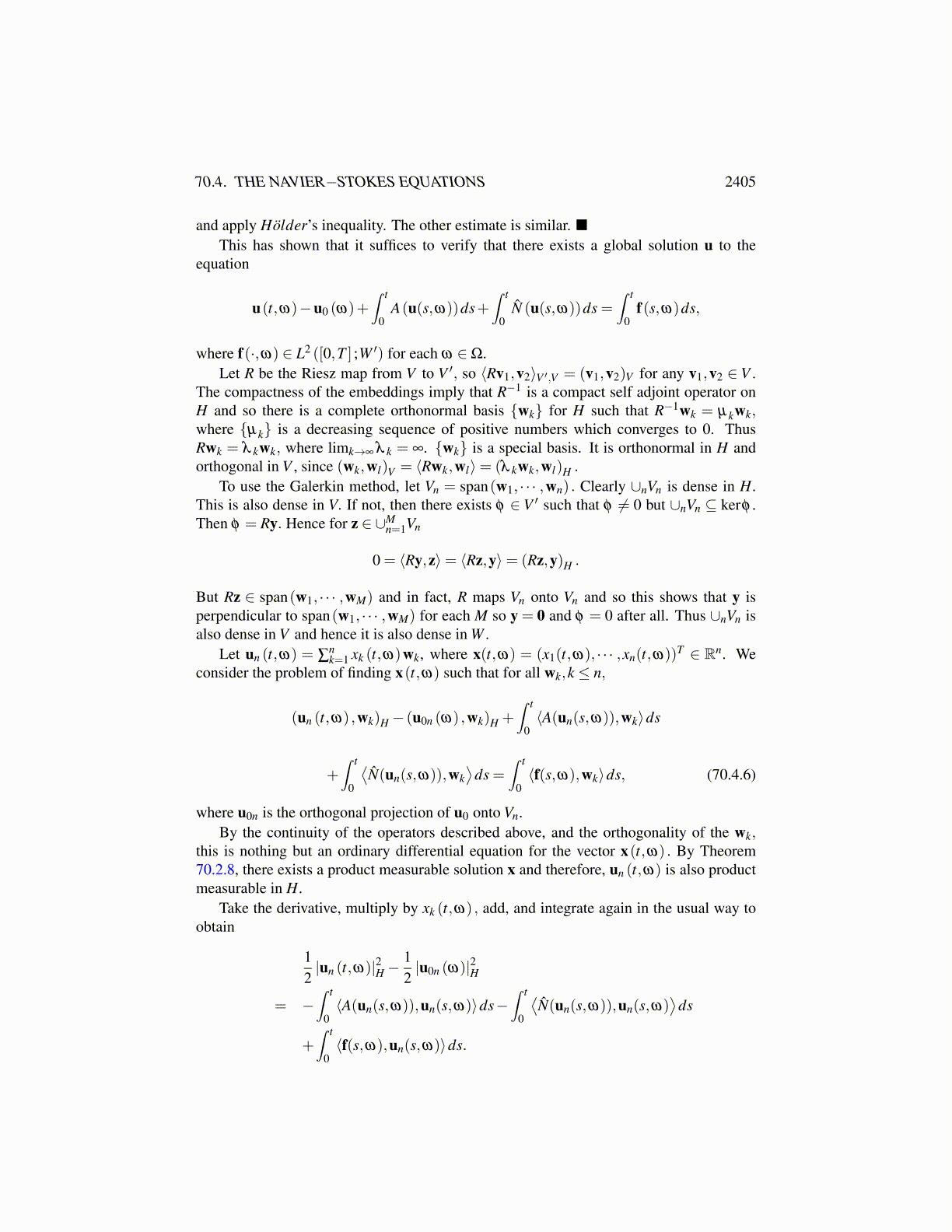
70.4. THE NAVIER−STOKES EQUATIONS 2405
that we switch the roles of V and W along with a few other minor modifications. This is thepart of the argument which gives a solution for each ω and it is standard material. Define
V ≡ S in(
Hd∗ (U))d
, W ≡ S in(H1 (U)
)d, and H ≡ S in
(L2 (U)
)d,
where d∗ is such that for w ∈(Hd∗ (U)
)dthen ∥Dw∥L∞(U) < ∞. For example, you could
take d∗ = 3 for d = 3. In [15], they take d∗ = 8 which is large enough to work for alldimensions of interest.
Let A : W →W ′ and N : W →V ′ be defined by
⟨Au,v⟩ ≡∫
U∇ui ·∇vidx, ⟨Nu,v⟩ ≡ −
∫U
uiu jv j,idx.
Then N is a continuous function. Indeed, pick v ∈V and suppose un→ u in W, then
|⟨Nu−Nun,v⟩|
≤∫
U
∣∣∣∣∣∑i, j (uniun j−uiu j)v j,i
∣∣∣∣∣dx≤C∥v∥V∫
U(|un|+ |u|)(|un−u|)dx
≤ C∥v∥V(∫
U|un|2 + |u|2 dx
)1/2(∫U|un−u|2 dx
)1/2
,
where what multiplies ∥v∥V clearly converges to 0.An abstract form for the incompressible Navier−Stokes equations is
u′+νAu+Nu = f, u(0) = u0,
where f ∈ L2 ([0,T ] ;W ′), for some fixed T > 0. As in [15], we will let ν = 1 to simplifythe presentation. A stochastic version of this would be the integral equation in V ′
u(t,ω)−u0 (ω)+∫ t
0A(u(s,ω))ds+
∫ t
0N (u(s,ω))ds =
∫ t
0f(s,ω)ds+q(t,ω) ,
where q(·,ω) will be continuous into V , (t,ω)→ q(t,ω) will be product measurable hav-ing values in V , and q(0,ω) = 0. So q here is a fixed stochastic process, which serves asthe random source. Also (t,ω)→ f(t,ω) will be product measurable into W ′ as well ashaving t → f(t,ω) in L2 ([0,T ] ;W ′). Our problem is to show the existence of a productmeasurable solution.
Let T be any fixed positive number and let q be any fixed process satisfying the above.
Definition 70.4.2 A global solution to the above integral equation is a process u(t,ω), forwhich ω→ u(t,ω) is F measurable and satisfies for each ω outside a set of measure zeroand all t ∈ [0,T ],
u(t,ω)−u0 (ω)+∫ t
0A(u(s,ω))ds+
∫ t
0N (u(s,ω))ds =
∫ t
0f(s,ω)ds+q(t,ω) .